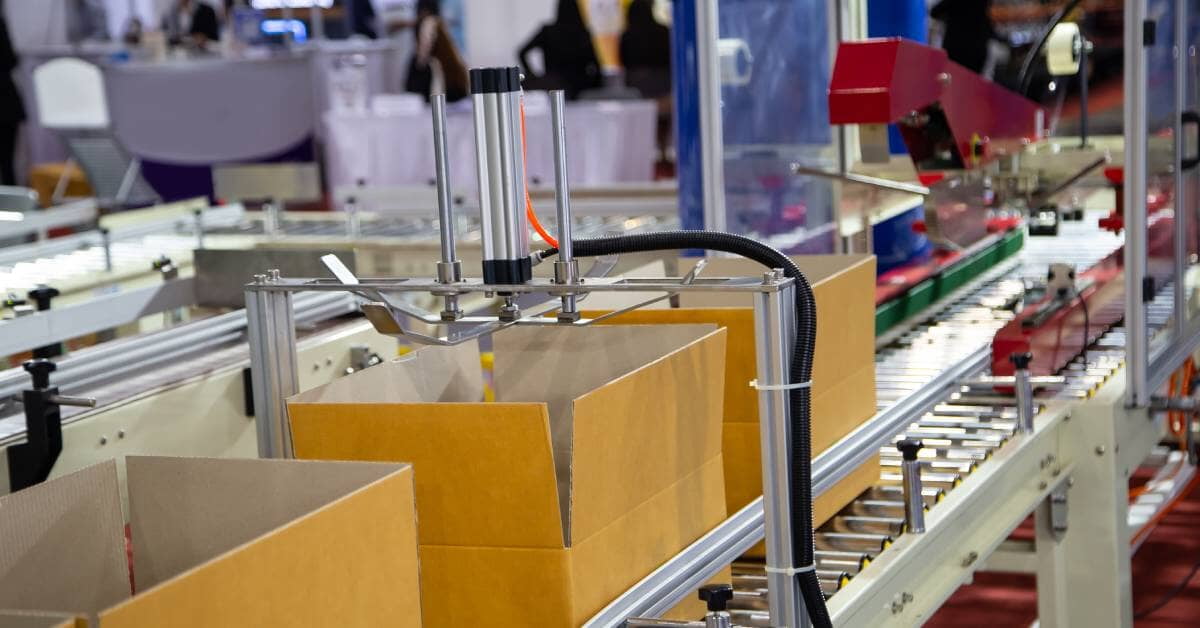
Forming cases correctly impacts product protection, presentation, and handling efficiency. We can characterize a well-formed case by precise folding, secure sealing, and consistent dimensions. Case formers and case erectors automate the process of forming boxes.
Choosing between the two machines can affect your packaging line’s efficiency and costs. Compare case formers and case erectors to understand the differences and find the right equipment for your business.
Case Formers Use Unglued Blanks
Flat blank boxes are pre-cut, scored sheets of material, often corrugated cardboard, that have not been folded or assembled into a shape. These blanks are stored and transported flat to save space and facilitate handling. They are common in packaging operations, where machinery folds and seals them to create complete packaging boxes.
Case formers take unglued, flat boxes and feed them into the machine. The machine uses a series of folding arms and mechanisms to fold the box along the scored lines. Once folded, the case former applies adhesive or tape to seal the edges, creating fully formed and ready-to-use packaging cases.
Case Erectors Use Knocked-Down Flats
Case erectors form cases from knocked-down flats (KDFs). These pre-cut and scored sheets of material, such as corrugated cardboard, have pre-glued joints. When needed, the case erector can erect and seal them to form complete packaging boxes for various products.
A case erector feeds KDFs into the machine. Then, it uses a series of mechanisms to erect the KDFs, folding along the scored lines to form cases. Once erected, the case erector may apply adhesive or tape to seal the edges, transforming the KDFs into boxes.
Considerations When Choosing a Machine
Using knocked-down flats over fully flat sheets offers convenience in assembly and setup. KDFs are pre-scored and pre-glued, simplifying the box-forming process and saving time during packaging operations. Additionally, KDFs are industry-standard and common, ensuring compatibility with existing carton assembly equipment designed for KDFs. This can streamline production processes.
On the other hand, fully flat sheets are generally more cost-effective than KDFs because they have lower manufacturing requirements. Additionally, pre-glued KDFs may not have consistent glue quality from case to case. Variability may cause irregular assembly, which is not an issue with fully flat sheets.
Case erector machines form precise, secure, and consistent boxes. To find the right device for your packaging line, consider the machine’s capability in handling various box sizes and styles. Additionally, assess the machine's ease of setup, maintenance requirements, and durability.
The differences between case formers and case erectors in packaging operations impact product protection, presentation, and handling efficiency. Case formers utilize unglued blanks, while case erectors work with pre-glued KDFs. These machines offer distinct advantages in terms of assembly convenience and setup. Quality case formers and erectors consistently produce stable boxes while speeding up assembly time and protecting products.
